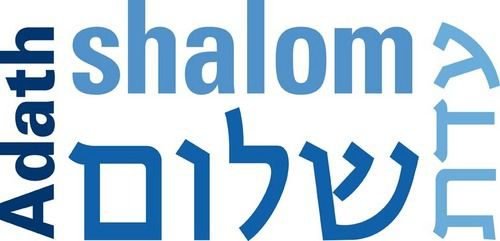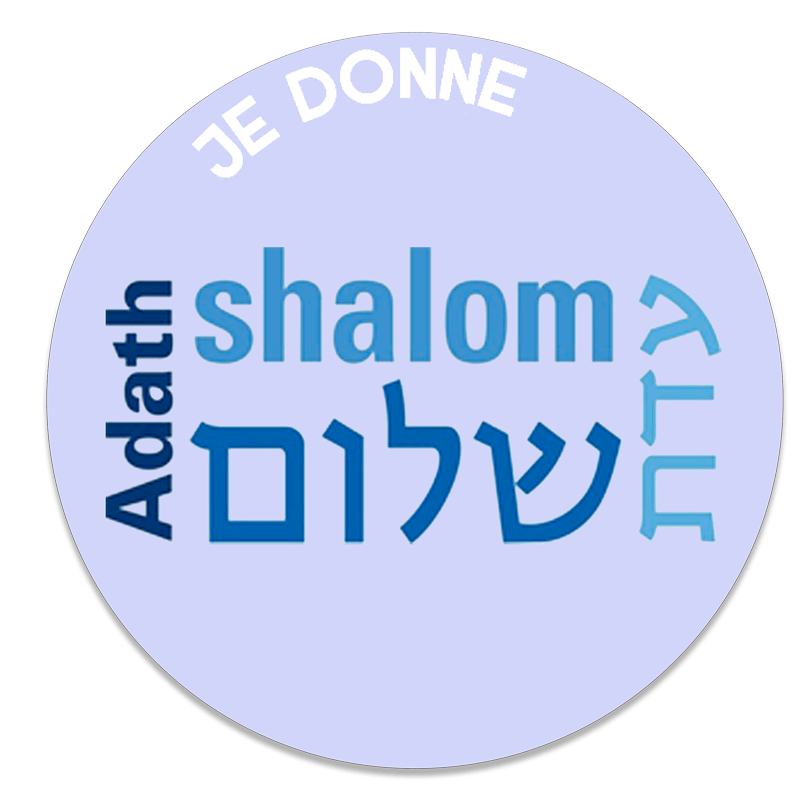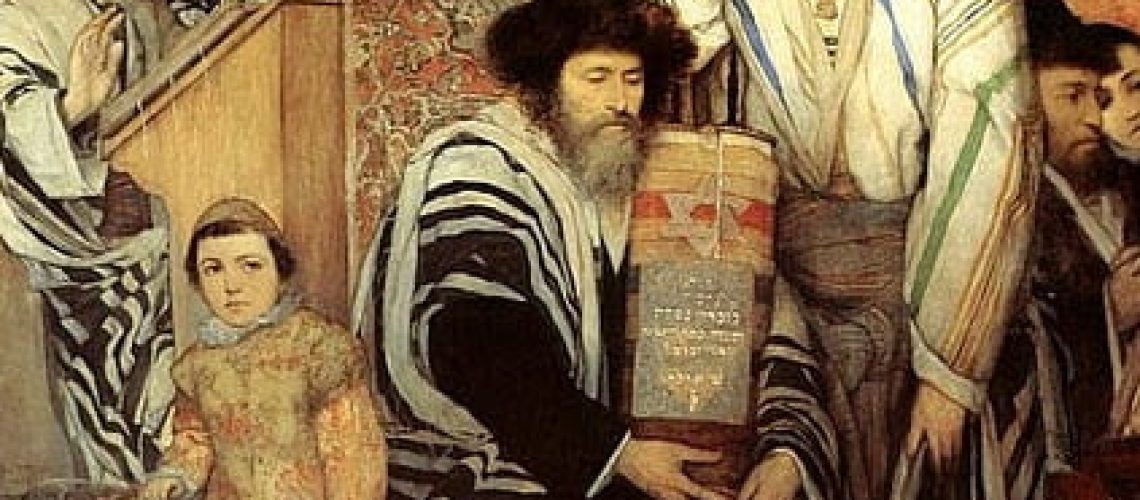I would like to discuss this subject from a few angles, without necessarily giving a formal conclusion regarding rules or policy. In any case, a response to this question depends on its formulation. If we ask ‘should babies and young children be brought to the synagogue?’, we will get a very closed answer. If the question is ‘What is the best way to bring babies and young children to the synagogue?’, the response will be more complex and less definitive. I would like to eventually attempt to respond to the second question, but will need to start with the first.1
We’ll assume for now that the child under discussion could also receive a Jewish education at home or elsewhere, and the only question is the added value of coming to synagogue. This is not always the case for many in our community today, and perhaps that will complicate our answers. But let’s first look at what obligation a parent has towards inclusion of their child in the synagogue space.
Educating children by being present
The Torah (Deuteronomy 31) describes the institution of the Hakhel, the great assembly that would happen every seven years, and at which portions of the Torah would be read. Everyone was required to be there, and the verse specifies “men, women, and children”. The Talmud (Chagiga 3a) remarks that since the children could not understand the words of the Torah themselves, they were nonetheless included “in order to give a reward to those who bring them there.” The meaning of this is not immediately clear, but it certainly implies that bringing the children to the gathering of the people is an obligation and has a positive value beyond the content of what they could learn. Perhaps the difficulty itself of bringing the children and the designation of this event as a family project, with all its challenges, is part of what made being at this great assembly so powerful. Being in the presence of a great multitude seems to strengthen the impression of being in the presence of God – and not only for children. The Tosafot (most probably Rabbi Elhanan of Dampierre or Rabbi Judah of Paris, both master talmudists of the twelfth century) comment on this discussion, removing it from its Temple-based context:
ועל זה סמכו להביא קטנים בבית הכנסת
“This serves as the model for bringing children to synagogue today.”
As well as the function of being in the presence of the community, there is an educational function to being in the synagogue. Rabbi Moshe Isserlis, writing in 16th-century Poland, writes (OH 124:7) that there is an obligation on parents to teach their children to respond ‘Amen’ to prayers, for as soon as they do so the children have a portion in the world-to-come.
וילמד בניו הקטנים שיענו אמן כי מיד שהתינוק עונה אמן יש לו חלק לעולם הבא
In effect, by answering Amen they become part of the Jewish community, and have a place in the synagogue. What age is he referring to? It seems to be quite young, as soon as they are able to understand the rhythm of saying blessings and answering Amen, probably around three or four years old. In another place (OH 149:1), Isserlis continues on this theme of children’s participation, and writes that it is customary to bring the children to kiss the Torah as it is being paraded around the synagogue.
ויש שכתבו שבאים התינוקות לנשק התורה כדי לחנכם ולזרזם במצות וכן נוהגין
“And some have written that the young children come to kiss the Torah in order to educate them and to excite them about the performance of mitzvot – and this is our practice.”
These two reasons, intellectual education (chinuch) and the non-verbal intimacy of being close to the sacred objects, seem to apply to many aspects of the synagogue experience. More than the content of the words being spoken, it is the gestures, the sounds and the ambience that is absorbed.
One final halachic source speaks of the obligation of bringing children to synagogue. It is important to read the original, because the beginning and the end of the text complement each other. With regards to Purim, the chapter in the Shulchan Aruch (OH 689) begins by ruling that everyone – men, women, converts, emancipated slaves – are obligated in reading (or hearing, usually) the megillah, and that “even children need to be taught to read it.” The same chapter concludes by saying something additional about children:
מנהג טוב להביא קטנים וקטנות לשמוע מקרא מגילה
“And it is a good custom to bring young boys and girls to hear the Megillah”
Once again, there is a level of formal education for children who can understand what’s going on to be involved – this is the ruling at the beginning of the chapter. Probably that ruling is talking about six- or seven-year olds. But the custom mentioned at the end of the chapter is necessarily referring to children younger than that age, otherwise the mention of the custom would be redundant after talking about an obligation.2 Once again, it’s assumed here that young children are present in the synagogue, at least on Purim, simply to absorb the atmosphere of the event.
To summarise, there is a general commandment incumbent on parents to educate their children through participation in synagogue events. For older children, this is more similar to formal intellectual education, and for younger children, it’s about experiencing the event on an emotional level. The collective Jewish memory is transmitted not through words but through experiences, through a process of religious and cultural osmosis.
I would also add that the commandment of educating children is both a private one that obligates parents with regards to their own specific children, and a universal one that obligates every adult in the community to feel responsible for the education of all Jewish children (See Bava Batra 21a; Maimonides MT Talmud Tora 1:2; Shulchan Aruch YD 245:3; Beit Yosef, end of OH 167; in short, these halachic sources spell out that if an adult is capable of educating, they are obliged to do so, and on an institutional level, every community is obliged to provide for educational needs of its children). As such, the question of what to do with young children in the synagogue is a dilemma for all members of the community, and not only parents.
Why not?
Let’s look at some reasons not to have children present in the synagogue during services. The most obvious objection is that the children, by their nature, make noise and call for attention which comes at the expense of the attention demanded by the prayers and the Torah reading. This attention and focus in prayer, known as kavannah, are crucial. In theory, some say that distracted prayer without kavannah counts for nothing, and is worthless. In practice, today we are more lenient; our minds are always somewhat distracted, and just saying the words is enough of a challenge (MT Tefillah 4:15; OH 98:2). In any case, even with this leniency, there is certainly a level of distraction that we need to avoid reaching, otherwise it’s impossible to call what we are doing ‘prayer’.
The Shulchan Aruch forbids holding anything in the hands during prayer, such as tefillin or money or food or even books (why we allow holding siddurim today is a separate discussion!) The commentary of the Mishnah Berurah quotes an opinion that having children sitting in front of a person praying shows the same lack of kavannah. (MB 96:4) Presumably the distraction comes from the child’s movement, play and noise, but there is another factor referred to by the rabbis. Moshe Isserlis, after speaking about the importance of kavannah and feeling that one is standing before the divine presence, rules:
ואסור לאדם לנשק בניו הקטנים בב”ה כדי לקבוע בלבו שאין אהבה כאהבת המקום ברוך הוא
One is forbidden to kiss their small children in the synagogue, for one must keep in mind that there is no love like that towards the Holy Blessed One. (Rama OH 98:1)
Showing affection and care to children takes away from the relationship, more abstract and thus more difficult to maintain, with God. The sense from these rulings is that synagogue prayers are not a family experience, and while the community is comprised of many individuals together, each individual should be focussing on their private spiritual experience. The presence of young children can simply make that difficult. Several commentators are upset at those who bring young children to the synagogue.
והטעם כי הילדים משחקים ומרקדים בבהכ”נ ומחללים קדושת בה”כ, וגם מבלבלים דעת המתפללים, ועוד גם יזקינו לא יסורו ממנהגם הרע אשר נתחנכו בילדותם להבזות קדושת בה”כ
The reason is that children play and dance and profane the sanctity of the synagogue. They distract the minds of those praying. And even when they grow old they will not change their ways to which they have been accustomed in their youth, to profane the holiness of the synagogue. (Kaf Hachaim OH 98:13, quoting the Shnei Luchot Habrit)
This last sentence adds another dimension to the presence of children: there is also a need to educate the children themselves how to behave in the synagogue so that they grow up with a sense of sanctity, knowing the difference between the synagogue and other places. In the same way, perhaps, parents wouldn’t take their young children to the opera. Apart from preserving the decorum in the opera hall, an implicit educational message is sent to the children that the opera is something that their parents value and respect. It’s possible that a similar message to children by their parents – “we’re doing something that we care about now, you need to stay away” – would give a positive educational message in the long-term. Does this contradict the educational messages that come from being in the synagogue as a child that we saw above? We will return to these questions further on.
Finding a balance
I want to reiterate here, if I haven’t made it clear until now, that it’s the behaviour of adults which is being examined here, and not that of children. Children play and make noise by their nature, and in different situations that energy is nourished, or harnessed, or developed or repressed, or a mixture of these. We’re examining here what the response could be to children when their natural noise has the potential to disturb the prayer experience of the people around them in the synagogue. Of course, people come to synagogues for many reasons, some less pious than we find in the rabbinic texts: people come because of habit or nostalgia, to see friends and family, for a feeling of community and to satisfy intellectual curiosity, to find potential Jewish partners or for the food. But I will stay with this discussion of prayer and Torah reading, because in practice, this is how synagogue life is expressed by many, whatever their motivations for coming.
Although my focus is the public synagogue experience and the complicated social mechanics of a community with different needs, I would like to briefly take a look at a text that deals with a slightly different dilemma, of a parent who is praying privately while their child is calling for their attention. Praying at home has its own dynamic: on an educational level it’s enormously important and enforces the message that prayer is an important part of Jewish life; it’s also within the everyday space of the children, and more difficult to change their behaviour. It’s clear that home-education can complement that of the synagogue – a child who recites the Shema every night before going to bed will experience the communal recitation at the synagogue in a more powerful and intimate way. But sometimes there is a clash between the parent’s own spiritual practice and the needs of their children. The following is brought in the name of Rabbi Jacob Molcho, who lived in 17th-century Jerusalem:
וכתב בבר”י בשם מהר”י מולכו שאסור לדבר בפיו בתינוק השוחק אף שמטרידו בתפלתו. אבל מותר לרמוז בידיו כדי שישתוק התינוק. וכ”כ מהר”ם בן חביב בתשובת כת”י וכתב מהר”י מולכו עוד שאם כבר עשה אופן שישתוק התינוק ועודנו שוחק ומטרידו ירחיק עצמו ממנו ולא ידבר ע”ש
It is forbidden to respond verbally to an infant who is playing, even if one’s prayers are disturbed. It is however permitted to make motions with one’s hands to indicate the child should be silent. Rabbi Molcho added that if one already tried to soothe the child but they are still playing and distracting, one should walk away without speaking [and continue to pray.] (Shaarei Teshuva 104:1)
Here again, the presence of the child and their noisy nature is a fact. In the context of the Amida prayer, where the demands for kavanna are highest, speaking to the child is considered to be an absolute and irreversible interruption of the prayer. However, making hand signals, and perhaps also shushing or stroking the child to comfort them, is permitted without being considered an interruption, as is simply moving away silently. We can question this judgment and ask in which circumstances it applies (does it apply to a screaming baby? to other parts of the prayer service?), but the recognition of the dilemma might at least be comforting. However, in the case of public prayer in the synagogue things are different: your personal prayer is not more important than that of the others, and moving yourself away from the noise doesn’t always solve the communal problem.
“Conclusion”
If our question is ‘should babies and young children be brought to the synagogue?’, then we will give the Jewish answer: sometimes yes, sometimes no. Translating that into practical decisions for parents and policy for synagogue communities is more complicated. But I would dare to say that, like everything involving children, the answer relies on a series of compromises.
On the level of the community, the compromise will come in the form of giving up the idea of orderly reverence. This is already implicit in communal prayer itself: it would be easier and quieter to say my own words at my own pace in my own space. The need to adapt myself to the rhythms of other people who may distract me in multiple ways is seen as worthwhile, because there is a value to having a community doing Jewish things together. The same could be said with children in the prayer space. Having children who grow up familiar with the sounds of the prayers; who learn to react, first with ‘Amen’ and kissing the Torah, and later with increased emotional and intellectual involvement; who make friends who may accompany them throughout their lives — all this is beneficial and valuable to the community as a whole. The sound of community prayers is a harmony of voices reflecting a shared experience and directed to the same God, but it also includes our humanity: coughing and sneezing, whispering questions and turning pages, and children running and crying and laughing. A community that cares not only about its future but about its present needs to compromise somewhat on decorum to make space for the children.3 This seems to me to be a mitzvah.
From the parents’ perspective, many compromises also need to be made. Bringing the children to the synagogue is already an investment in their Jewish identity and literacy, and it’s clearly the right thing to do, but it’s not all-or-nothing. The involvement in the prayers needs to be adapted to the age and personality of the child, and also to the moment: it might be that during quiet times (the silent Amida or the rabbi’s sermon), the compromise is to take the children out, while at other times (the early-morning service, or while singing), the children’s presence is precious for everyone. If two parents, or other family members, are present in the synagogue, then the management of the children’s and the parents’ needs are more easily shared and balanced. Expectations of our children need to be realistic. It might be that young children can’t take a 3-hour shacharit service, and it’s not fair to demand that of them: maybe coming for the Shema and to watch the Torah being taken out of the Ark is enough. Sometimes, the most correct is for the parent to model participation in the services, but let their kids come in and out as they wish. Again, saying ‘no’ or ‘I can’t be with you now’ can sometimes be a positive educational message regarding the synagogue experience; other times, bringing the children close and explaining or igniting their imagination is the right thing to do; other times, the child’s best interest is not to come into the synagogue space. But the core of the parent’s responsibility for the religious development of their children has to come though empowerment and saying ‘yes’: yes, sit with me; yes, ask questions; yes, interact with people and words and objects here; yes, make friends; yes, you belong.
Amen, may these questions continue to challenge us forever and ever!
Notes:
1 [Some sources and inspiration from R. Aryeh Lebowitz and R. Ethan Tucker]
2 Rabbi Yisrael Meir Kagan [BH 689, cf. MB 689:17] has a different reading of this apparent contradiction and insists that the ‘custom’ also refers to older children. This is a difficult reading; the simple sense is that it refers to a different age.
3 Of course, providing age-appropriate children’s activities in parallel to the services is an extremely good thing for a community to offer, as well as a space for playing, and technical solutions such as a feeding-space, a changing table and a library of Jewish books and resources for parents to take home. If the community does not or cannot provide these needs, the parents can also arrange distractions for the kids: books, toys and snacks. But these should not pretend to have solved the dilemma of children in the synagogue prayer-space itself.




